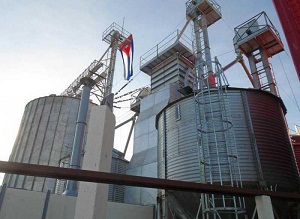 With the installation of a modern drying plant, capable of processing 37 tons of rice per day, the province of Pinar del Río has put an end to the need to transport grain harvested across four western municipalities a distance of over 150 kilometers, to the Los Palacios Agro-industrial Grain Enterprise (EAIG), at the other extreme of the province.
With the installation of a modern drying plant, capable of processing 37 tons of rice per day, the province of Pinar del Río has put an end to the need to transport grain harvested across four western municipalities a distance of over 150 kilometers, to the Los Palacios Agro-industrial Grain Enterprise (EAIG), at the other extreme of the province.
Yoel Ribet, director of the enterprise, recalled that for a long time, the grain harvested in Mantua, Guane, Sandino and Minas de Matahambre, had to be transported to the Los Palacios drying plant in Vueltabajo, and that “Many times, this same rice then had to return another 150 kilometers to be distributed to the population.”
Hence the modern drying plant will have a major impact not only on producers in the region, but on the province’s economy, with savings in fuel and transportation.
According to experts, in the municipality of Mantua alone, 60 to 70% of the harvested crop had to be transported to Los Palacios to dry, with an estimated monthly cost of over 1,200 liters of fuel.
The new plant, which will being operations shortly, forms part of the agro-industrial complex under construction for some years in the municipality of Mantua, with the aim of fully exploiting the potential of this area with a long tradition of rice cultivation.
During a tour of the plant, Minister of Agriculture Gustavo Rodríguez Rollero explained that in addition to the industrial complex, the project has included the supply of machinery to producers (tractors, tools and harvesters), and workshops on their maintenance.
“To do this, we have made use of warehouses and other facilities of the former cattle enterprise, which have been recovered with the support of several entities of our system,” the minister noted, adding that the project is intended to ensure the logistics to enable increased production of rice and other grains.
According to the EAIG director, the goal is to produce in excess of 3,000 tons of rice by 2020, a figure that would make Mantua and neighboring municipalities self-sufficient.
In order to achieve this objective, agricultural development will also be necessary, with the recovery of micro-dams, the incorporation of new productive areas and the installation of irrigation systems.
(Granma)